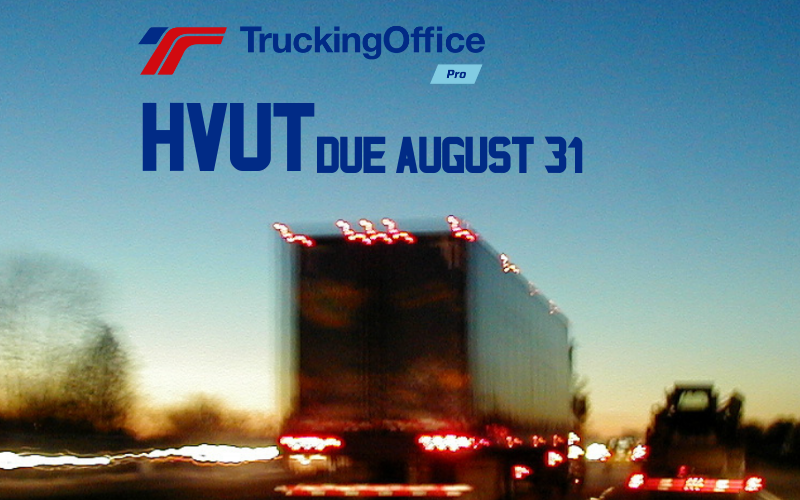When is the HVUT due? Short answer: August 31. Probably there’s another question:
What’s an HVUT?
A heavy vehicle use tax is collected by the US government once a year. It’s based on the weight of your equipment.
The table below illustrates these categories.
| Gross Taxable Weight | Heavy Vehicle Use Tax Rates |
|---|---|
| Below 55,000 lbs | No tax |
| 55,000-75,000 lbs | $100 plus $22 per 1,000 pounds over 55,000 lbs |
| Over 75,000 lbs | $550 |
There are some exceptions to the taxes. You can find the details here.
The HVUT sometimes catches new owner-operators by surprise. It’s just one of many surprises, compliments of the US Congress.
Surprises for New Owner-Operators
There are a lot of surprises for new owner-operators. People who drove for trucking companies find they like the work and life on the road and decide to take the chance on going on out on their own. Often it’s not until they trip and fall over surprises like the HVUT or the IRP that they realize there’s a lot more to trucking than loading and driving.
Some new truckers try to go it as inexpensively as possible. Trucking can be difficult to break into – it’s often who you know that gets you the best loads. Between those high-paying loads, there are lots of opportunities for low-paying jobs. The owner-operator needs to know which they should take. That’s not always an easy decision.
We’ve talked about the Florida problem.
It’s easy to get good loads into Florida. It’s a lot harder to get a well-paid load out. There’s a solution to this problem, but you need more information to make a good decision.
- You need to know your numbers. In particular, you need to know your revenue per mile. How much money do you make per mile? We’re not talking about how much you get paid. We’re talking about how much money is left in your pocket after your expenses are paid. When you know this number, you can make an educated guess about how much you need to get to make the trip worth it. Remember doing averages back in high school math? We suggest you try to create an average number between the high-paying trip down and the low-paying trip back – and try to get that number above your revenue per mile.
- You need to know your driving style. Are you one of those who like to drive at night and maybe push that pedal a little harder when the traffic is down? Or are you someone who doesn’t want to risk the consequences of a speeding ticket? We’re not going to judge you either way. We will say that this is a good time to look at your ELD data. You can learn a lot about your driving habits and how much time you can expect that load will take.
We know a lot of truckers hate the ELD. We get it. But let’s use the data that the ELD keeps and see what we can learn from it.
New owner-operators need every bit of help they can get to build their successful trucking business.
TruckingOffice TMS and ELD
You’re not going to find your revenue per mile in QuickBooks. It will take a lot of work to program a Google spreadsheet to compute it for you. You need a real trucking management software as the solution to these number problems. TruckingOffice has a single report, the Company Overview Report, that can help you learn how to make your business make more money. It’s not just about getting the big-paying loads. It’s about being smart about your invoices, your maintenance, and your time. TruckingOffice TMS helps you with all of them.
If you’re a new trucker on the road, you can take TruckingOffice out for a spin. We offer a free trial for you to examine every part of our system. We’ve got people who can help you get started.
If you’re looking for an ELD that works with you – simple, easy, fast, and secure – we’ve got an ELD for you. You can download our free ELD Buyer’s Guide to help you understand what you need to know before you buy a system that requires multiple wires and confusing installation instructions. The ELD doesn’t have to be complicated!
When is the HVUT due? on August 31!
(At least it’s not an IFTA month too.)







The IRS reminds those who have registered, or are required to register, large trucks that it’s time to file Tax Year 2021 #Form2290, #HVUT – Heavy Highway Vehicle Use Tax Return. The deadline is August 31, 2021, for vehicles used on the road in July 2021. @Truckdues it is $7.99!